The Calendar
In 1976 Maurice told me that…..
There was trouble brewing in Iran. The immediate cause was that the shah had changed the calendar. The Iranian calendar had counted the years commencing with the Hijra, Muhammad’s flight from Mecca in 622 (Gregorian date). The Shah chose a new calendar based on the date on which the Persian king, Cyrus the Great had come to the throne. Thus Iran moved from the year 1355 to the year 2535 overnight. The change also meant that the year that the Shah came to the throne was the year 2500.
There was trouble brewing in Iran. The immediate cause was that the shah had changed the calendar. The Iranian calendar had counted the years commencing with the Hijra, Muhammad’s flight from Mecca in 622 (Gregorian date). The Shah chose a new calendar based on the date on which the Persian king, Cyrus the Great had come to the throne. Thus Iran moved from the year 1355 to the year 2535 overnight. The change also meant that the year that the Shah came to the throne was the year 2500.
Westernisation
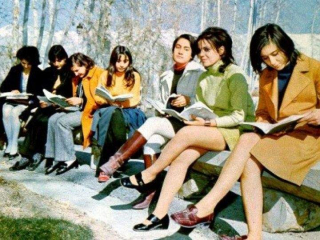
It sounds frivolous but this action was bringing under close scrutiny the Shah’s policies of westernisation. These policies had originated with his father in the early 1930’s when both men and women were required to wear western dress. The hijab, abaya and chador (voluminous covering) were banned. Men and women were allowed to mix in public places. In the western world, this was seen as the emancipation of women in an eastern, islamic country and was generally welcomed in the west.
The Future Queen
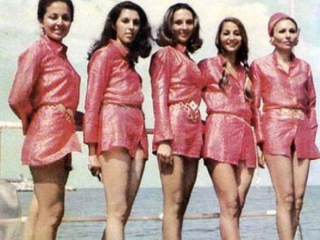
By 1970 this policy was welcomed in Persia as well, at least by the urban majority. Persian women enjoyed their freedom. It could be said with confidence that the concern about westernisation did not have it’s origins amongst young women. It did however prove a trigger for reactionary fervour amongst fundamentalist Islamic groups.
Economic Stagnation

This had co-incided with a disappointing end to the program of economic expansion launched in 1974. The programme had been overly ambitious and had lead to inflation followed by widespread unemployment. There were leftist and communist groups in Iran who siezed on the disappointing outcome to ferment unrest. They reached an alliance with the fundamentalist Islamic groups without apparently realising where this co-operation would lead.
The Peacock Throne

Maurice was very concerned.
He believed that the dissent in 1976 had it’s origin’s in the celebration of “2500 years of the Peacock Throne” which had been celebrated by the Shah alongside the ancient capital of Persepolis in 1971. I did know about the celebration. Both the Duke of Edinburgh and Princess Anne had attended and it had, at least in the papers I read received favourable coverage in the British press.
According to Maurice the event had been 20 years in the planning but had been held in abeyance until a programme of economic development showed measurable success. The final decision to proceed had been enthusiastically supported by the British government.
Maxim’s

However after the event there had been widespread criticism to the whole event. The criticism had originated amongst the Shah’s supposed allies. Americans, French and some British commentators deemed the cost of the function, variously estimated at between 40 and 400 million dollars, as being obscene for country with an impoverished population.Maurice showed me the newspaper clippings and fumed that it was a form of jealousy. The problem stated in France where the contact for the catering had been placed with Maxims. Maxims overstated the value of the contract in a press release and the left wing press picked up on it.
Jensen’s
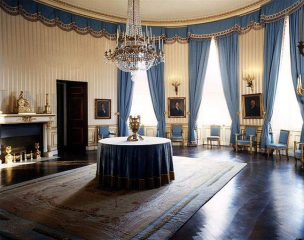
Subsequently another French company Jansen announced that it had been given the contract for the erection of a tent city at Persepolis as it had been judged to be too expensive to construct a hotel. Again a press release over estimated the value of the contract. according to the press release it would probably have been cheaper to build a hotel!
Jensen is recognised as being the first truly international interior designer and prior to the iranian contract had distinguished itself in carrying out a substantial make over of several rooms in the White House in Washington.
Maurice believed the overestimates were driven by a commercial prerogative to promote the success of the two companies. In these circumstances the exaggeration of contract was so common that the figures were usually ignored. In this case they were not. The inflated figures became unchallengeable and were widely reported by those who want to denigrate the Shah’s achievements. The inflated costs continued to be published in French, British and US newspapers, if anything with continuing embellishments.
Infrastructure

In Iran itself it was well known that the cost of the celebrations included an investment in public infrastructure specifically the opening of thousands of new schools,new services for many growing communities and a total renovation of the country’s biggest university. In any case, Maurice told me the cost pales into insignificance when compared with the civic functions the countries in which the articles were being published
In the end the heads of state of America(President Nixon), Britain(Queen Elizabeth) and France(President Pompidou) all refused to attend, sending deputies. The reasons were probably associated with security but the press claimed that it was because the leaders believed the celebration to be “an obscene waste of money”.
Symbolic Insult
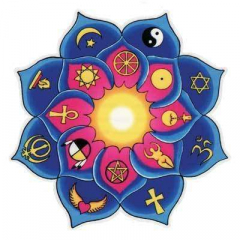
However there was something else.
Maurice told me that there were critics who maintained that the tent city installed at Persopolis erased or covered over with tarmac something special in the “Treasury Gardens”. The people who claim this were saying that it was an act of vandalism.
At the same time religious leaders claimed the configuration of the camp was an affront to islam. The whole celebration infuriated the Ayatollah Khomeini, then exiled in Syria. he called it the “devil’s work”.
Maurice was unable to elaborate on these latter two criticisms,dismissing them as nonsense.
The economic crisis was real. The reason for Maurice’s 1976 visit, was to negotiate cancellation charges for equipment for a new munitions factory which had been abandoned as an austerity measure. I subsequently discovered that despite his unswerving loyalty to Iran he was actively seeking employment outside of the country “until all this blows over”.
the Iran/Iraq War

I never saw him again. By the time of the news of the Shah’s flight from Iran in 1979, I was in a totally different job.
The Ayatollah Khomeini returned to set up a Clerical Islamic Autocracy.
Iran then became involved in a war against neighbouring Iraq, another Islamic state, which was to last eight years, the longest war of the 20th century. Sadly many of the shells we helped both sides manufacture were used on each other, not on some theoretical third party aggressor.
Reversal of Westernisation
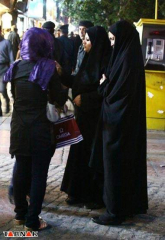
It is estimated that half a million people died in what was a battle between two factions of Islam ,but which involved many others. as well as this suffering the islamic revolution reversed the “westernisation” of Iran. the policy of reversal had particular impact on the emancipation of women.
The Moral Police
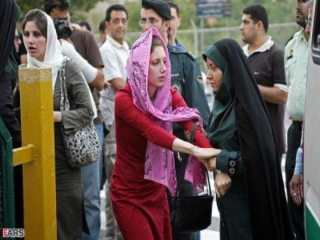
There are still reports, thirty five years later of the “modesty police” in Iran enforcing the re-introduction of the islamic dress for women, banning high heels, nail polish and laughter from universities. it is possible to be arrested for wearing “immodest” clothing even when driving a car.

